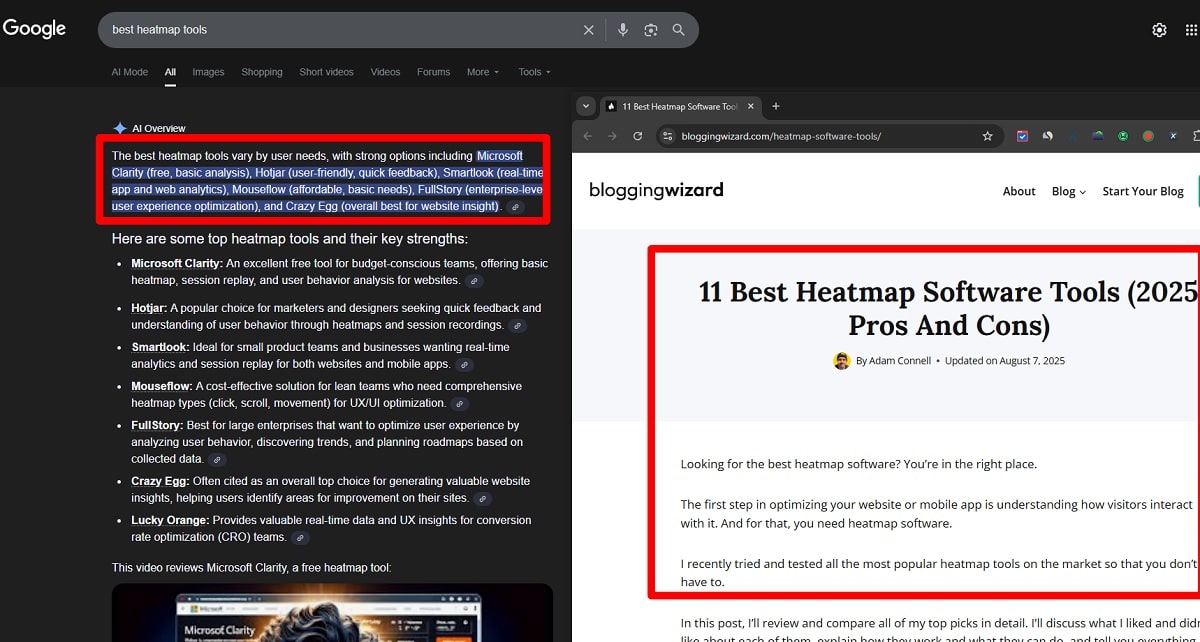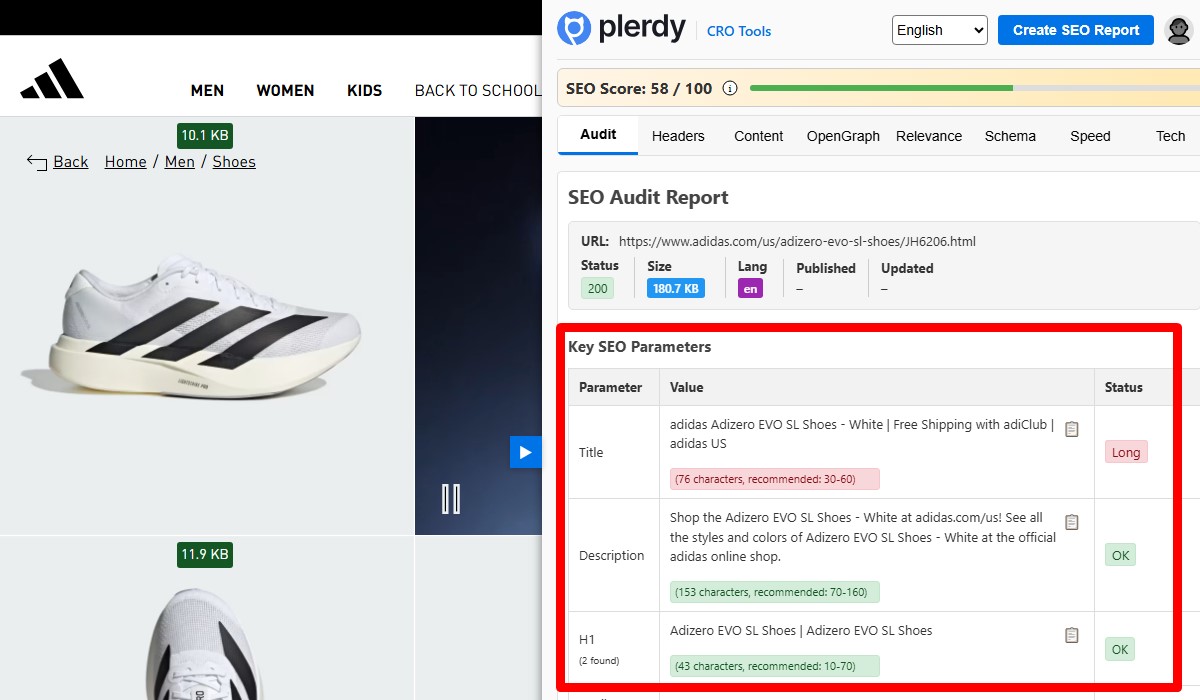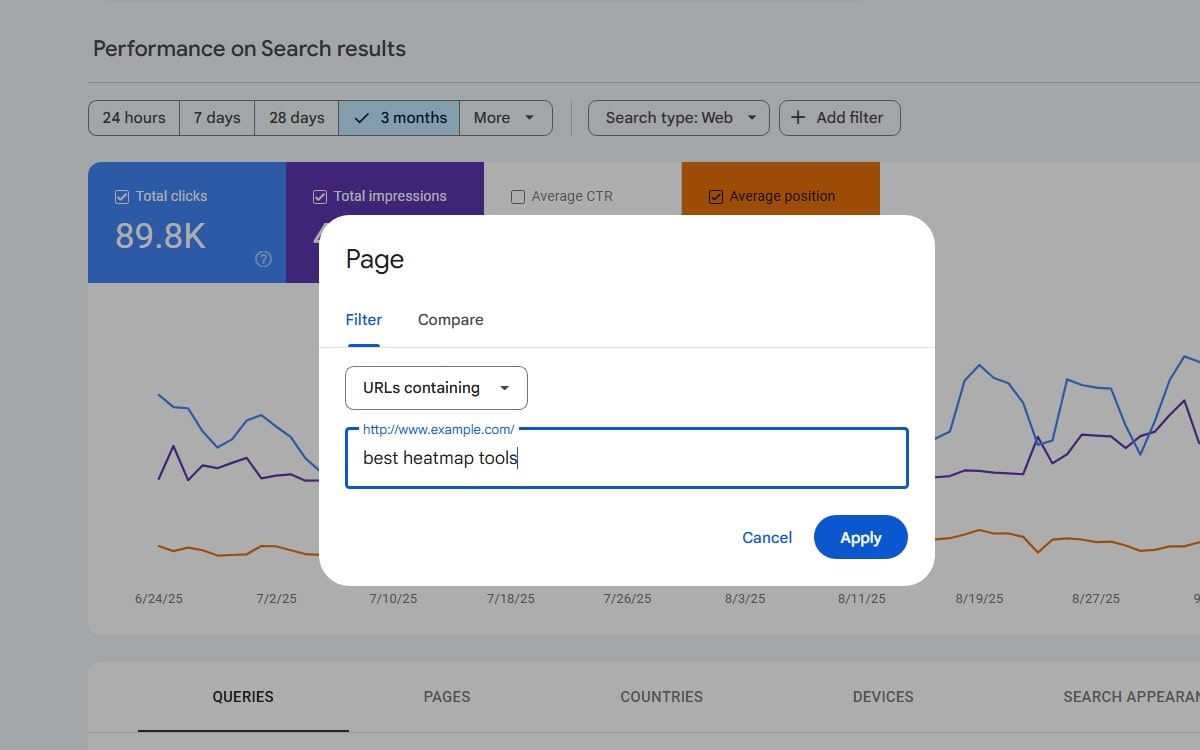Let’s be straight: in 2025 your problem isn’t keyword cannibalization, it’s intent cannibalization. One page tries to teach, another page tries to sell, and AIO shrugs. Position #1? Cute. Not the right answer for AIO. In marketing, intent drives clicks; in marketing, keyword only decorates. When intent clashes on a page, the page loses trust, and the page loses CTR. Fix the intent, then fix the keyword.
What Intent Cannibalization 2.0 Actually Is

Content Signals vs. User Tasks
Intent 2.0 means the intent on a page must match the real task. If your keyword screams “how to,” but the page pushes “buy now,” you trigger cannibalization. In marketing this feels small, but it kills trust fast. Quick check: run Plerdy SEO Analyzer and see if title/H1 match the dominant intent and task.
SERP/AIO Signals
Google’s AIO skims your page, maps intent, then decides which page answers best. When keyword hints one path and the page behaves another, cannibalization grows. In marketing audits I saw CTR swings of 12–20% after fixing intent. Semrush, Shopify docs, even Reddit threads show the same tension: intent wins; the keyword only assists.
- CTR drops while rank looks fine
- AIO quotes the wrong page — annoying
- Same keyword, different CTA across pages
- H1 promises one thing; action blocks another
Rapid Teardown Framework (3–4 Pages In 15 Minutes)

Data You Need
Grab 3–4 page candidates, the core intent per page, and one main keyword per intent. Pull an AIO snapshot, CTR, and internal links. For marketing proof, add Google Search Console, Ahrefs, or Semrush. Timer on. No excuses.
Steps To Run The Teardown
- Collect pages for one topic cluster.
- Save AIO snapshot and SERP.
- Label intent for each page and each keyword.
- Audit title/H1/description in Plerdy SEO Analyzer.
- Map internal links; fix marketing leaks.
- Ship quick recommendations; aim for +10–15% CTR.
Simple Scoring Model
Give every page 0–2 on intent match, 0–2 on CTA-to-intent, 0–2 on AIO citation. Sum it. Low score = cannibalization risk; high score = clear keyword-to-intent handoff. In marketing runs, this tiny model spots messy cannibalization before traffic drops.
Live Mini-Teardown: One Topic, Four Intents
Page A — Comparison Intent
Title/H1 promises comparison of tools; the page pushes checkout and discounts. Intent says evaluate; keyword screams vs, but CTA sells. Result: cannibalization, AIO quotes another page. Marketing miss.
Page B — How-To Intent
Title/H1 says how-to, but the page has theory, no steps. Intent is tutorial; keyword guides newbie, yet zero actions. AIO ignores page and shows Reddit thread. Marketing hurts.
Page C — Transactional Intent
Strong buy intent, clear keyword, page layout. CTA is perfect, but proof is weak: no specs, thin comparisons. Cannibalization happens; AIO favors Shopify guide. Marketing fix: add evidence.
Page D — Navigational/Brand
Brand intent wins, but the page wanders into keywords. H1 is branded; content jumps to marketing claims. Result: cannibalization inside cluster, AIO gets confused. Fix hub routing.
Fix & Monitor: Stop Pages Competing, Start Owning The Intent

Consolidate vs. Split
If two pages chase one intent, merge. If one page mixes tasks, split. Cannibalization grows when keyword says “compare” but the page sells. In marketing that’s noise, not strategy. Rule: one intent per page, one keyword per job.
Rewrite For Dominant Intent
Pick the winning intent, then rebuild the page scaffolding. Change H1, subheads, CTA. Make the keyword serve the task, not boss it. In marketing tests we saw +12–18% CTR after this surgery. No fluff. Tight verbs. Clear proof.
Internal Link Rewire
Route hub → subpages by intent. Anchor text mirrors keyword and task. Kill loops that fuel cannibalization. Every page earns a role. In marketing ops, this cut self-competition by ~20% within two sprints.
Priority This Week (ICE/RICE)
- Consolidate duplicate intent pages — fast win
- Rewrite one page for a single keyword and CTA — measurable
- Rewire three internal links per page — surgical
- Ship AIO snapshot + owner notes — accountable
After edits, run Plerdy SEO Analyzer weekly to confirm titles/H1/description match the dominant intent and to catch intent-drift in internal links.
Conclusion
Here’s the deal: when intent leads, your marketing stops fighting itself. Less cannibalization, cleaner page focus, better quotes in Google AIO, steadier CTR. Treat keyword as helper for intent, not boss; the page answers one task, and marketing gets real clicks. Teams who fixed cannibalization reported +12–18% CTR and more conversions. Keep keyword simple, map intent clearly, and watch the page calm down. Grab 3–4 key pages, run the teardown, kill conflicts, then check in Plerdy SEO Analyzer and track one week.
